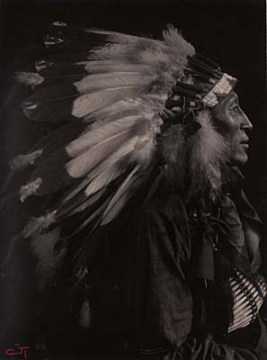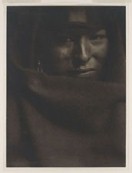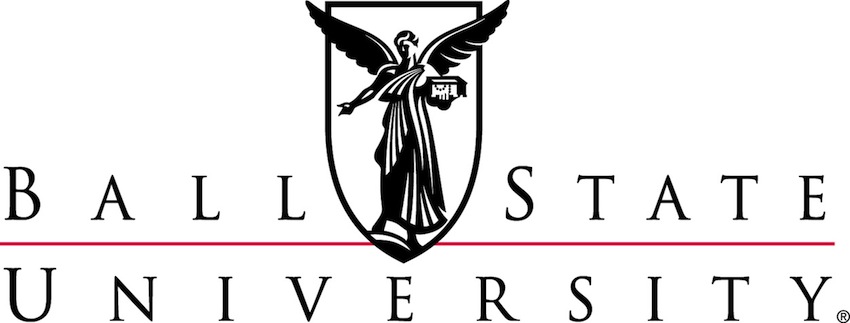Themes: Formal Portraits

Amos Two Bulls. By Gertrude Käsebier. Photographic History Collection, National Museum of American History, Smithsonian Institution.
Formal portraiture of Native Americans is as old as photography itself. Spanning a period between the first daguerreotypes in the 1840s to handheld Kodak cameras in the 1890s, the federal government engaged in formal portraiture for each nation's delegates as they journeyed to Washington, D.C. to meet the president. As more and more photographers went "into the field" to "capture" Native American images before they "vanished" as a race, portraiture expanded beyond and surpassed the government's delegation photographs. Among the foremost of these field photographers was Edward S. Curtis, but he was certainly not alone in his endeavors. The West was flooded with amateur Euroamerican tourist-photographers eager to produce their very own version of American Indian authenticity.
Photographers were not blazing new trails in portraiture, however. Even before the invention of photography in 1839, painted portraits were a common practice among the various colonial powers. Prominent colonial leaders commissioned images of the North American Indians to give to their kings and rulers. Just as Curtis would deny the studio in favor of the field 70 years later, by the 1830s, George Catlin broke with the tradition of bringing delegates to the painters and went westward to paint Native peoples in their own settings. (For more on painted portraiture, see Truettner 2010) By Käsebier's time, formal photographic portraits were nearly formulaic in their execution.
In brief, Native Americans were already familiar with photography both as a show of respect from the federal government and also as an often invasive tool of empire. Furthermore, Käsebier was not engaging in a new practice with her formal studio portraits. What, then, is the significance of her formal portraits?
While the practice of formal portraiture was decades old, Käsebier's skills as a pictorialist were unrivaled, making her portraits a distinctive part of the American pictorialist movement and some of the earliest art photographs of Native Americans. As for the "Show Indians," their fame through Buffalo Bill's Wild West led to many photographs of them being produced, but never studio portraits before Käsebier's request. Käsebier's own fascination with the Sioux Indians can be compared with that of the daily audiences crowding performances of the Wild West, interested in meeting the performers. (Hutchinson 2002, 38) Many ticket holders visited the Wild West camp prior to performances, meeting with the Indians or other members of the Congress of Rough Riders, and seeing how they lived while traveling with Cody. But Käsebier's status as a professional photographer allowed her to arrange the private meeting with the Indians for her own purposes.

Iron Tail (Formal Portrait). By Gertrude Käsebier. Photographic History Collection, National Museum of American History, Smithsonian Institution.
Käsebier seated the Indians one by one in her posing chair, and treated the Sioux performers as friends. Preparing for their visit to Käsebier's photography studio on in April of 1898, the Sioux men at the Wild West camp met to distribute their finest clothing and accessories to those chosen to be photographed. The photographer admired their efforts, but desired to, in her own words, photograph "a real 'raw' Indian," "the kind I used to see when I was a child," referring to her early years in Colorado and on the Great Plains. She selected one Indian, Chief Iron Tail, to approach for a photograph without regalia. He did not object. The resulting photograph was exactly what Käsebier had envisioned: a relaxed, intimate, quiet, and beautiful portrait of the man, devoid of decoration and finery, presenting himself to her and the camera without barriers. ("Some Indian Portraits," 1901, 7-12)
Several days later, however, when presented with the photograph, Iron Tail immediately tore up the image, stating it was too dark. Käsebier photographed him once again, this time in his full feather headdress, much to his satisfaction. Like Iron Tail, others of the Sioux men set aside their feathers and blankets for Käsebier. No other stories like his were recorded during the portrait session. An elder battle hero in his tribe, Iron Tail was probably at the Battle of Little Bighorn with Sitting Bull. Each feather in his headdress, or war bonnet, represented an act of bravery over a lifetime, like medals to a military man. Despite Iron Tail's preference for the second photograph, Käsebier kept the original and used it as the frontispiece of the 1901 Everybody's Magazine article. She believed all the portraits were "a revelation of Indian character," showing the strength and individual character of the Native Americans in "new phases for the Sioux." (Some Indian Portraits" 1901, 12)

The Red Man. By Gertrude Käsebier. Photographic History Collection, National Museum of American History, Smithsonian Institution.
The incident with Iron Tail demonstrates Käsebier's own motivations in formal portraiture in capturing her perception of American Indian "character" and strength. Like any photographer, her own bias filtered through her lens, and she cannot be understood any differently than as a product of her time. Undoubtedly, the prevalence of the idea of the "vanishing Indian" influenced her portraits as she attempted to photograph the Sioux Wild West performers in an instance of cultural transition. The incident with Iron Tail also demonstrates his agency over his own image through his insistence on retaking the photograph. While the Edward Curtis-type photographers in the West were staging their photographs through the removal of evidence of modernity, use of costumes, and retouching of their glass plates, Käsebier remained committed to untouched plates and the authenticity that the "Show Indians" provided for themselves through their finest regalia. In this way, her formal portraits straddle a gray area between pictorial, Romantic bias and authenticity uncommon in the photography of her contemporaries.
Her formal portraits stand as a testament to both the common practice of her painter and photographer predecessors, and her own success in establishing a reputation as an accomplished portrait photographer able to request a formal portrait sitting with some of the Sioux performers in Buffalo Bill's Wild West. The performers themselves exhibit their own interest in their representation, making these formal portraits truly unique.
Only one of the portraits, "The Red Man," apparently considered the best artistic portrait of the collection, was submitted to exhibitions or salons. A few of the photographs were reproduced in Alfred Stieglitz's Camera Notes journal in 1902. Today, the photographs remain among the most significant made by Käsebier during her distinguished career. The images are simple, thought-provoking, modern portraits of individuals who, like Käsebier, straddle a gray area between Native culture and Anglo-American society.
For a direct comparison between Formal and Informal portraiture as defined by the curator including the Iron Tail photographs, explore our Comparative Gallery.
Search the collection to view all Käsebier's formal portraits.



